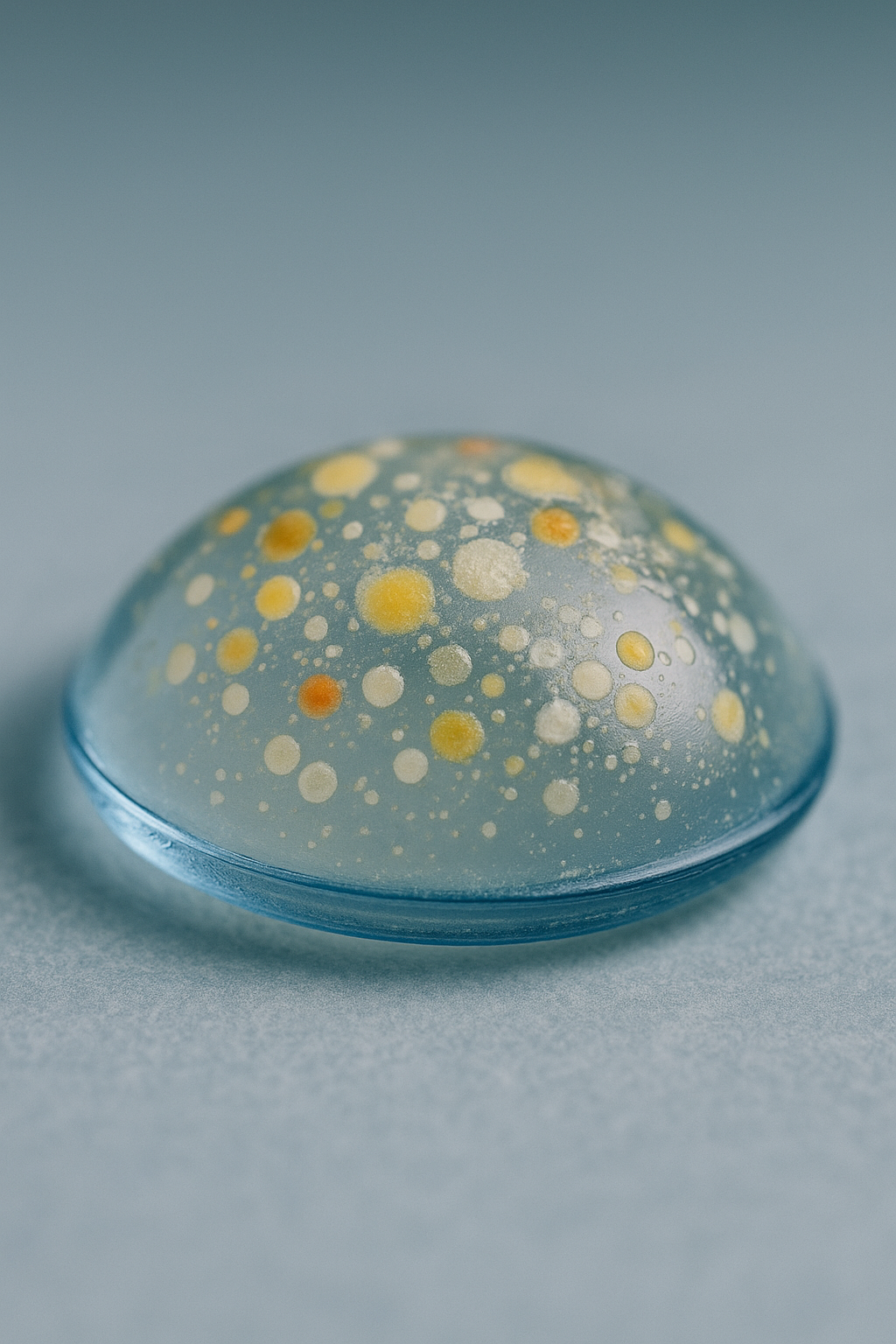Don’t Sleep in Your Contacts
Acanthamoeba keratitis (AK) is one of those infections that gets your attention fast. It’s rare, serious, and potentially vision-threatening. If you’ve Googled it (or stumbled across some horror story on TikTok), you’ve probably seen enough graphic descriptions and cautionary tales to make you want to toss your contact lenses in the trash forever.
But this post isn’t about repeating everything that’s already out there. There are mountains of info on AK online, what it is, how it happens, why it’s terrible.
This post is partly for you, the curious reader, but also partly for me as an eye doctor who’s always questioning anecdotal evidence (if you haven’t picked up on that yet with previous posts on if Carrots are actually good for your eyes, Is sitting too close to the TV bad?, and do pinhole glasses really work?). I’ve spent years counseling patients on the risks of AK (because, frankly, it’s terrifying when it happens), but I’m also someone who loves stats. So I’ve been wondering: Are we, as eye care professionals, biased because we mostly see the cases where things go wrong? Are we missing the bigger picture by focusing on the exceptions, not the rule?
So let’s focus on the hard numbers, and calculate what the real odds are of catching AK. And how do those odds shift depending on whether you’re a careful or reckless lens wearer?
First: What Is Acanthamoeba Keratitis?
Acanthamoeba is a tiny organism found in water, soil, and even air. Most of the time, it minds its own business. But if it gets trapped between your contact lens and cornea, it can infect your eye causing Acanthamoeba keratitis, an extremely difficult to treat infection that eats away at the corneal tissue and can lead to permanent vision loss or even require a corneal transplant.
Time to gather the data
I wanted to calculate your real risk, so I dug into data from Canada, the USA, and the UK. Each dataset had certain benefits, and since I practice in Canada I really wanted to use their data. However after running through it all, I ultimately chose to use the UK numbers, since their centralized healthcare (NHS, Public Health England) was the most consistent at reporting cases, and the most recent published data was really fresh (2023 study based on 2015 data). The Canadian numbers were similar, but I do suspect they were slightly underreported. Therefore, based on the UK data:
2.35 cases per million people annually.
87% of cases in contact lens wearers.
UK population: ~68 million.
Contact lens wearers: ~3.9 million.
AK cases among lens wearers annually: ~108 cases.
What Are Your Real Odds?
Here’s the breakdown:
Annual risk (careful wearer): 108 cases/3,900,000 contact lens wearers = 0.0000277 cases per contact lens wearer per year or 1 in 36,111
Lifetime risk over 20 years (careful wearer): 1−(1−0.0000277 cases per contact lens wearer)^20 years ≈ 0.055%
So, if you wear contacts every day for 20 years, your lifetime risk is 0.06% (tiny, but not zero).
What If You’re Reckless?
Let’s say you like to sleep in your lenses and swim with them. As per the CDC AK Outbreak Report (2007) ,Chicago Contact Lens Study (2008) and Microbial Keratitis Review (2015), risky behaviors (sleep + water + hot tub) compound on top of each other, and multiply your risk by 50 to 100 times.
Annual risk (reckless wearer):
50x: 0.0000277 cases per contact lens wearer per year x 50 = 0.001385 or 1 in 722
100x: 0.0000277 cases per contact lens wearer per year x 100 = 0.00277 or 1 in 361
Lifetime risk over 20 years (reckless wearer):
50x increase: 1 - (1 - 0.001385 cases per contact lens wearer per year)^20 ≈ 0.02738 cases per contact lens wearer per year or approx 2.74%
100x increase: 1−(1−0.00277 cases per contact lens wearer per year)^20 ≈ 0.0538 cases per contact lens wearer per year or approx 5.38%
TL;DR: The Risk Table
Your lifetime risk is 50-100x higher if you sleep, swim, or hot tub in your lenses.
Keep reading, then scroll back here to see if you beat the odds.
Why Is Acanthamoeba Keratitis So Hard to Treat?
While we are waiting to see the results of your AK Tracker, lets briefly discuss why AK is so hard to treat. See, Acanthamoeba is like the cockroach of the microbial world. It exists in two forms:
Trophozoite (the active, eating form)
Cyst (the hard shelled, dormant form)
When you attack it with medication, it can switch into cyst mode, where it’s highly resistant to drugs, disinfectants, and even extreme environments. This makes eradication extremely difficult. The infection can recur or smolder for months, all the while the making the eye extremely painful and blurry.
The Treatment Regimen (A.K.A. Not Fun)
Anti-amoebic drops: Biguanides (PHMB, chlorhexidine) and diamidines (propamidine).
Frequency: Every hour, day and night for the first days to weeks.
Duration: Often months of treatment (3-6 months or longer).
Steroids: Sometimes used cautiously (can worsen things if the amoeba isn’t fully cleared).
Painful, time-consuming, and exhausting. And if that doesn’t work? You might need a corneal transplant.
Conclusion: Maybe We’re Not Overreacting After All
Acanthamoeba keratitis (AK) is one of those catastrophic outcomes we, as eye doctors, feel compelled to warn about. Catching it is bad, and would rank up there as one of the worst things to ever happen to you. We have now shown the odds of a reckless contact lens wearer developing AK are at about 1 in 361, or 0.28% per year, adding up to roughly 5% over 20 years.
But here’s the problem: Humans are notoriously bad at understanding risk. We hear 1 in 361 and either brush it off as "not likely" or catastrophize it as "definitely happening." Our brains just aren't wired to grasp the implications of odds very well.
So let’s put it into perspective:
Driving without a seatbelt carries about a 1 in 485 risk of death per year for regular drivers.
That means reckless contact lens wear is actually riskier—about 1.3 times more likely to result in catastrophe (AK vs. death) than driving without a seatbelt.
Yes, dying is probably worse than catching AK, but both are catastrophic. Either way here’s the key point: Society doesn’t tolerate that kind of risk anymore. We have seatbelt laws. Public safety campaigns. Social norms that make buckling up automatic.
Not because the risk is massive, but because the outcome is severe and the risk is preventable. The same logic applies to AK. The outcome (excruciating pain, vision loss or corneal transplant) is serious. The risk (if you’re reckless) is comparable to risks society has already agreed are unacceptable. And that’s why we as eye care professionals harp so much on proper contact lens use since you can reduce your AK risk by over 100 times just by not sleeping in your lenses, not wearing them in water, and practicing basic hygiene.
This post started as a thought experiment for myself, and after seeing the numbers? I’ll keep warning. Because when the risk matches something we’ve outlawed (like not wearing seatbelts), it’s worth the reminder.
One Last Thing...
If you’ve been reading this and wondering how your own reckless odds play out, scroll back up to your AK Tracker. Did you dodge it? Or did that 1 in 361 chance catch up with you? The vast majority of readers will get through unscathed, with the Tracker showing a number of years that far exceeds the years any one would ever wear contacts (~75 years of contact lens wear would likely be the max anyone would ever conceivably wear them, from about age 10 - 85). But just know, if you are one of the unlucky one, and the Tracker shows a number under 75, that you just caught one of the worse things that could ever happen to your eye. A true catastrophe.
And that’s the real-world implication of risk. Sometimes you win, sometimes AK flashes red. But with good habits, you can make sure it almost never happens.
Dr. Burke is an optometrist practicing at Calgary Vision Centre. Because of the risk of AK (as well as other types of keratitis) he is a big proponent of daily disposably contact lenses. Opinions above do not constitute medical advice, and readers should consult with their optometrist and health care team if they have questions or concerns about their eye health













